Open source enterprise data integration tools, such as, WSO2 DSS and WSO2 DAS , play a key role in enterprise data integration.
Plus, open source models can reduce your costs considerably, while eliminating any lock-in issues. According to industry statistics, you can save about 40% to 48% in software licenses by just using open source tools alone.
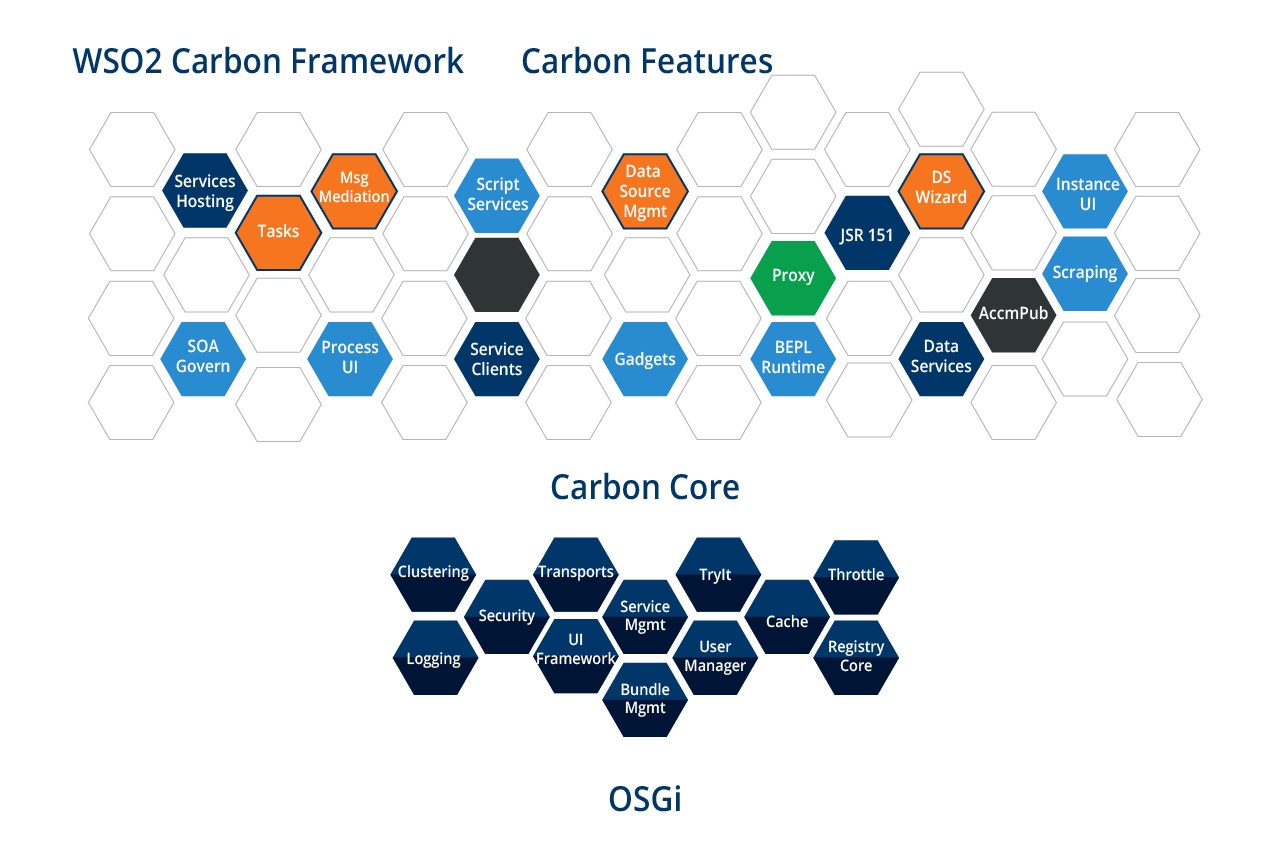 Figure-1, Framework
Figure-1, Framework
The WSO2 Carbon light-weight, open source, service oriented platform hosts a rich set of basic middleware components including security, clustering, logging, statistics, management and others.
The component manager lets you extend the Carbon base platform to address your unique requirements by installing additional components with point-and-click simplicity.
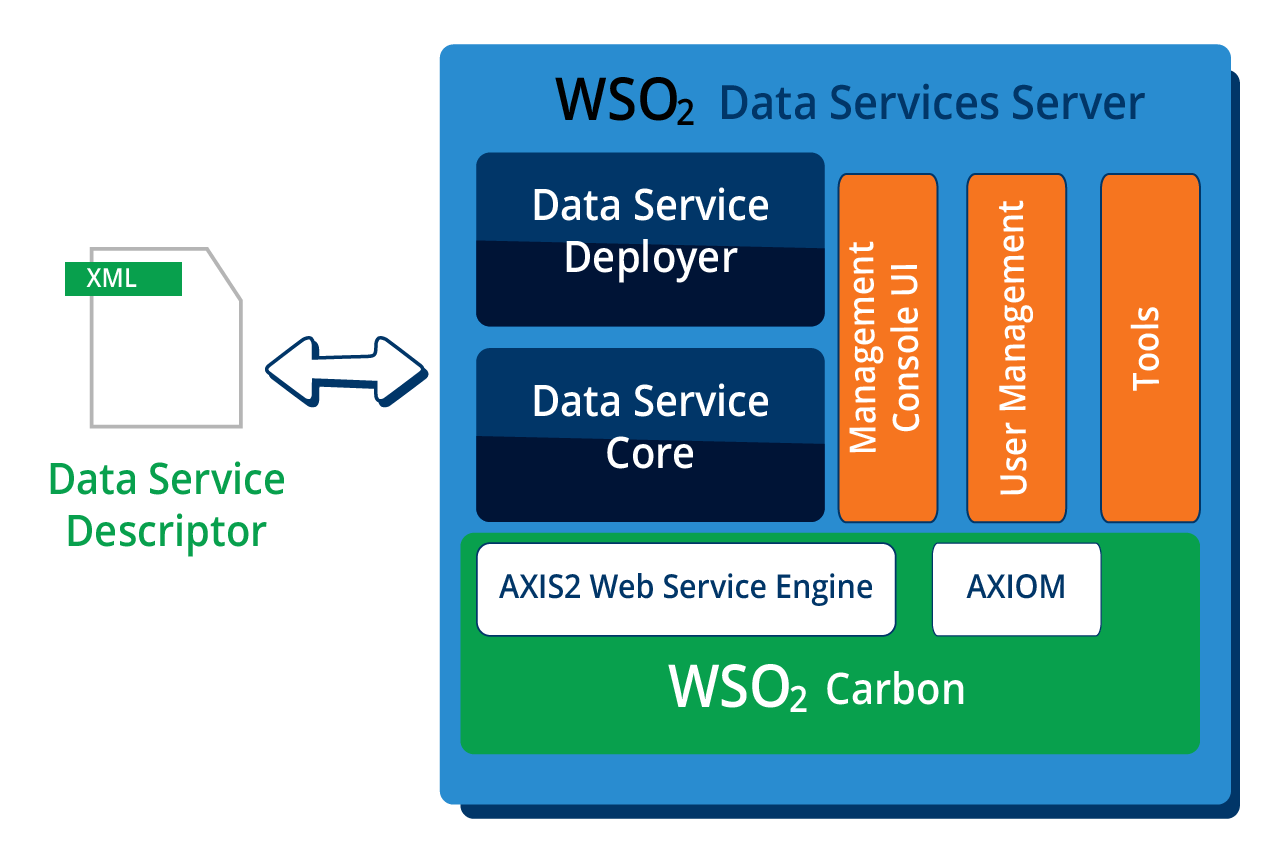
Figure - 2: Overview of WSO2 Data Services Server architecture
Developed on top of WSO2 Carbon, the WSO2 Data Services Server turns your data into WS-* and REST web services and resources with the identity, statistics, governance, security, clustering and management features of WSO2 Carbon.
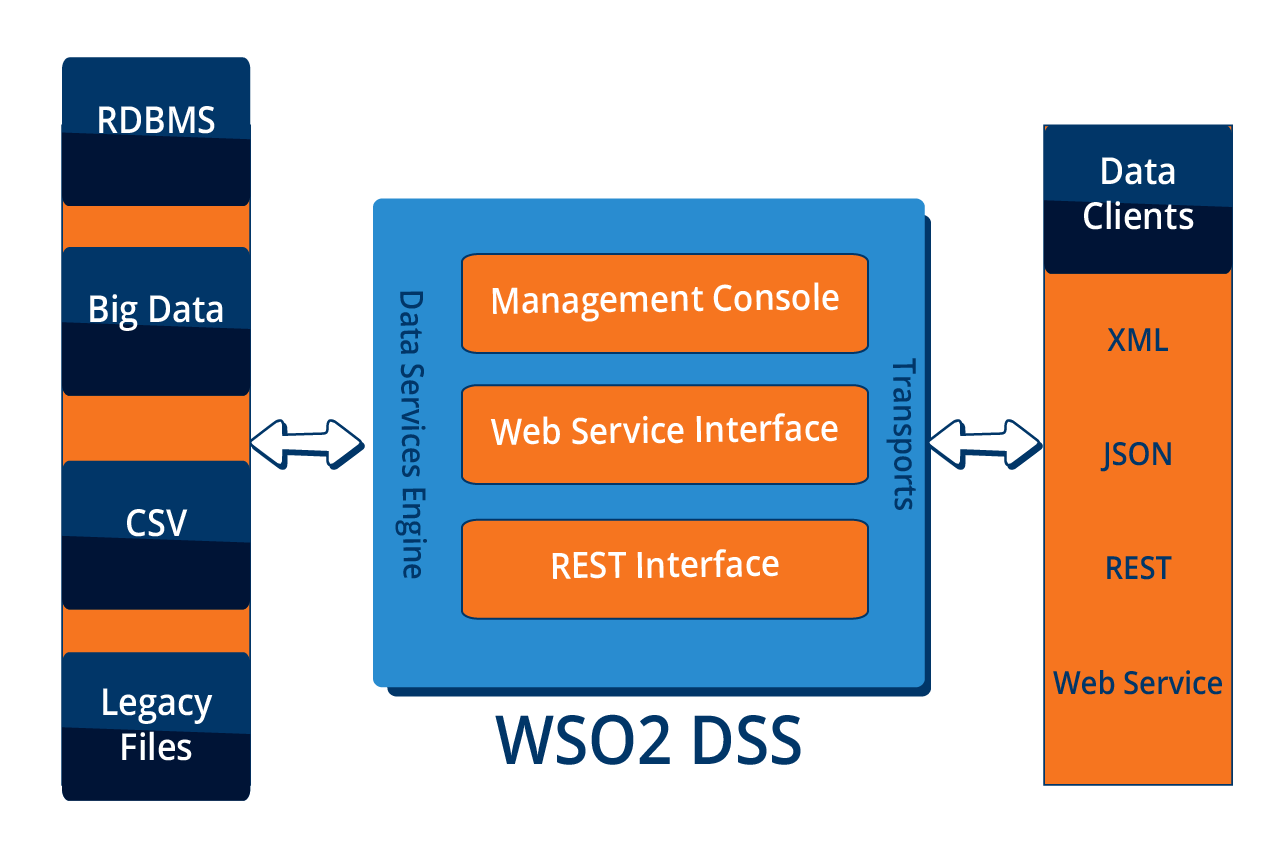 Figure -3, WSO2 DSS
Figure -3, WSO2 DSS
The Server also uses SOA development to provide an easy-to-use platform for creating and hosting data services, enabling the easy integration of the data into your business processes, mashups, gadgets, BI applications and any service in general.
So, what are the best practices for enterprise data integration using WSO2 DSS Server?
- Data Governance usage: Data governance specifies decision rights and responsibility framework to have set of correct behaviors. It consists of evaluation, creation, maintenance, storage, usage, archival and removal of the data. To ensure the effective use of it, it emphasizes standards, processes, roles, and metrics in every milestone.
- Data Governance targets: It approves data strategies, policies and procedures. It sponsors, observes, and manages the data and its services. It resolves data issues and promotes data assets.
- Take holistic approach and build development iteratively.
- Obtain sponsorship exclusively: Flow should be from top to bottom.
- Build business case: Estimate quantifiable benefits accordingly.
- Collect, establish and report on metrics to find the progress on each milestone.
- Maintaining data quality: Includes profiling, cleansing and matching to standards. This includes identification of stakeholders and establishing roles and rights. It also monitors and reports the status of the quality of data.
- Capacity planning: Taking care of maximum capacity size.
- Naming convention: Standard naming conventions to be followed.
- Ability to understand the pattern and variations.
- Ability to have master data management: Build good master data management to address the dimensions and reporting.
- Ownership of data: This is needed to show whether the data is maintained on-premise or in the cloud.
- Single view of data: Integrating the same data even if they are different in name. For instance, email and e-mail is the same data, with a different name.
- Full view of all transactions: Helps in many ways, such as row level security, and audit logging features.
- Analysis of relationship from multiple angles: Efficient Entity Relational models to be designed.
- Data Integration components: Identification of all possible master and meta data which helps in integration and in reporting.
- Data Security: Needed for single sign on and end to end identity management.
- Data compliance: Data standards should be maintained for compliance and regulation requirements.
- Scalability: Horizontal scaling is better though vertical scaling is possible. Vertical scaling is more expensive.
- Standard notification framework: Clear communication plan and stakeholder’s management helps in achieving this.
- Data synchronization: Data consistency is maintained.
- Monitoring failures and using fault tolerant system: Having exception handling in the right places helps to identify errors and alerts.
- Parallel computing: Wherever possible, parallel processing is enabled.
- Web based easy visualization interfaces.
- Identification of relevant data stores as input sources.
- Batch processing for heavy load processing: Clear definition for historical load processing and real time processing should be available.
- Provision for real time data analysis.
- Performance within SLA.
• Top 10 practices of data integration
• Experts-reveal-the-top-5-data-integration-best-practices
• three-more-data-integration-best-practices-that-you-may-not-know-about
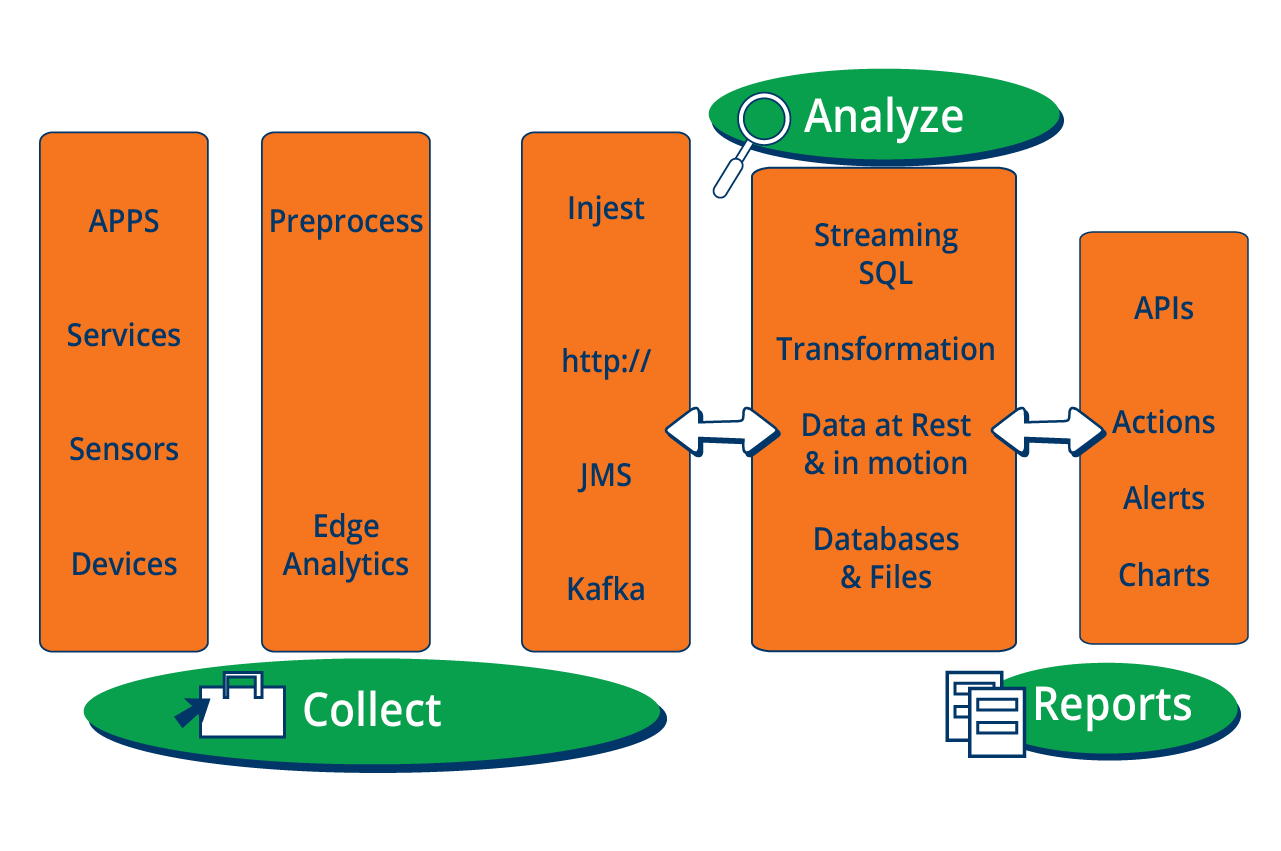 Figure- 4, Analytics
Figure- 4, Analytics
What are the best practices in enterprise data integration using WSO2 Analytics?
- Plan on key metrics.
You need to understand the metrics which are meaningful to the business.
Questions such as:
- What is your final goal for the data collected?
- How will this data help your business?
will help you to formulate the questions you should ask of your data.
Best practices also include understanding the value of data, management cost, number of decisions made, objectives reached, data representation and coverage, data stake holders and management process maturity.
Other things to consider are:
Extremely High Performant Processing Engine
Data aggregation
Flexible granular level aggregated reports.
- Support in Big data analytics and reporting.
- Powerful and Extensible Query Language for Temporal Event Stream Processing
- Partitioning support to achieve parallel processing
- User-friendly Execution Management
- Support for Rich Event Model
- Extremely High Performance Event Capturing and Delivery Framework
- Supports Multiple Alert Notifying Mechanisms
- Easily Integrates with any Enterprise System for Event Capture
- IoT (Internet of Things) Integration
Sensor data; unstructured data and edge analytics support are available.
- Debugging Support
- Massively Scalable
- Highly Available Deployment
- Support for Long Duration Queries
- Integrated, real-time, and batch analytics
- Interactive analytics
- Built-in Support for WSO2 Products
- Possibility to create custom dashboards
- Detects conditions and generate real time alerts and notifications (SMS, push notifications, email, physical sensor alarms etc.)
- Exposes event tables as an API via WSO2 API Manager and WSO2 Data Services Server.
- Self-service analytics
- Comprehensive management and monitoring Web console with enterprise-level security
- Built-in collection and monitoring of standard access and performance statistics
- Flexible logging support with integration to enterprise logging system
- In built support for rich representation of data via a dashboard
- Simulating capabilities via the Event Simulator.
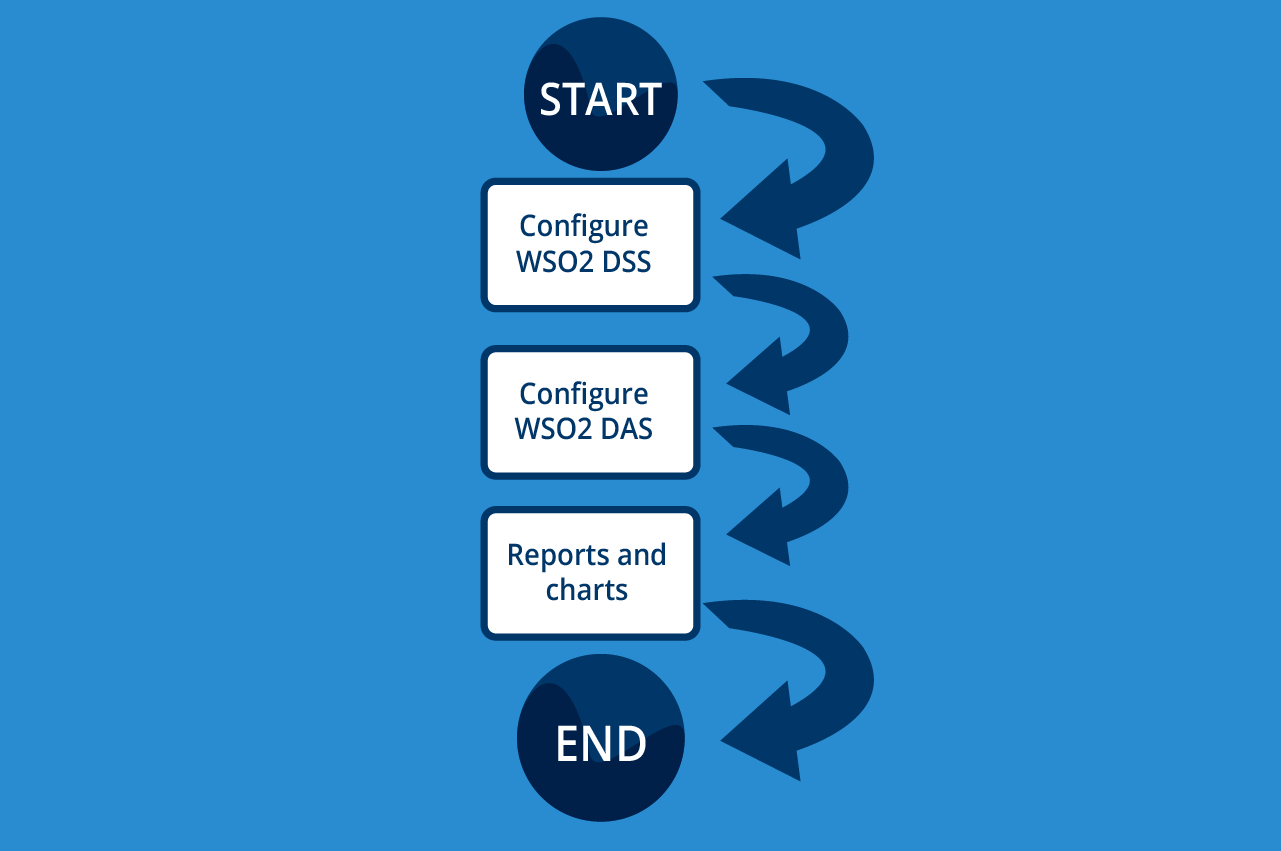 Figure -5 shows high level diagram of data flow.
Figure -5 shows high level diagram of data flow.
WSO2 Enterprise integrator version 6 comes as a single package with the following enterprise Integration platform modules and profiles included (WSO2 Library)
- ESB Service Integration (WSO2 ESB)
- Message broker (WSO2 MB)
- Business process (WSO2 BPS)
- Micro-services and Analytics.
- Real-time data processing (WSO2 DSS)
- WSO2 Governance registry
- WSO2 business activity monitor (BAM)
- API manager and identity server
Having one tool addressing this topic makes the whole process simpler. If the tool like WSO2 Integrator is open source and capable of addressing the requirements, then it provides a simpler and more useful way of approaching enterprise integration.
WSO2 creates a standardized, fully interoperable, single point of contact for all your enterprise Integration platform needs. This allows you to quickly monitor and handle any risks and points of failure in your network. Compared to other tools, it makes developing, implementing, and maintaining your network easier for you, your IT staff, and your budget.
Why should you use an ESB?
The business world is undergoing a revolution. With the proliferation of technology across our lives and work, industries around the world are realising that the tried and trusted methods that have kept them moving forward might no longer suffice. Consumers today are connected, informed, and unprecedentedly technologically savvy, and as a result, the companies they deal with are expected to be the same.
Digital transformation — the process by which organizations modernize themselves to incorporate new digital technologies throughout their entire business — is becoming necessary to survive.
Modern clients want instant service and support from the brands they deal with. They want brands that make themselves available to the client in a way that suits the client, not in a way that suits the organization. And they want this experience to be offered seamlessly across every channel. In order for an organization to meet these needs and wants of the consumer, it is absolutely necessary for companies to be innovative and to stay abreast of digital updates and changes. With this in mind, decision makers in businesses are emphasizing the need for digital transformation within their organizations.
With the rise of tools such as CRM, ERP, SRP and others, it has become necessary to integrate these tools in order to have a complete view of your customers data and to provide them with the level of service they expect. Using an ESB will ensure all of your tools talk to each other and give you the power to understand your customers and drive your business forwards.
Contact us today to find out for yourself why our customers praise the effectiveness of our product at improving their IT networks and systems.

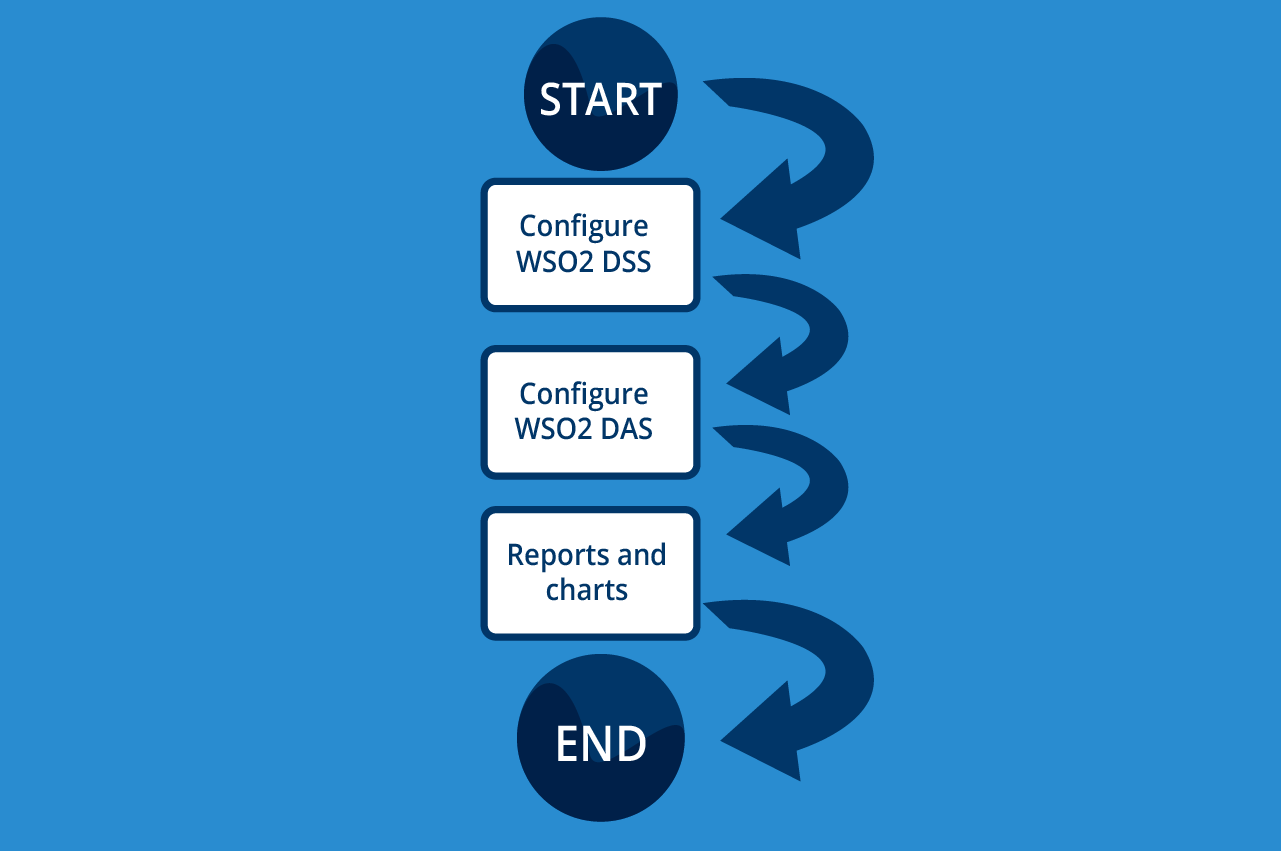

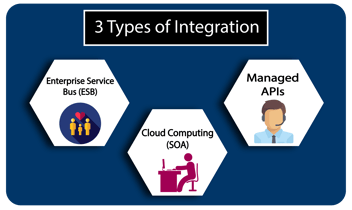
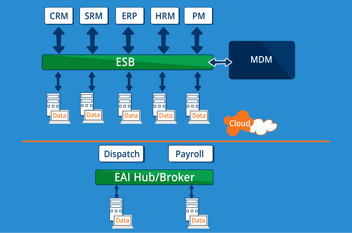
Leave a Comment